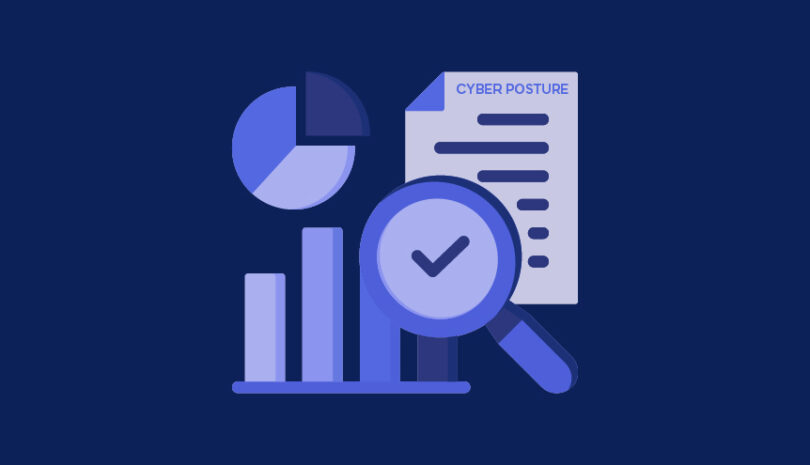Most organizations today rely on static vendor ratings to assess third-party risk. These scores are typically based on surface-level indicators, like external scans or broad compliance checklists, that provide a quick snapshot of vendor posture. While useful, they often fail to capture the deeper nuances that determine a vendor’s true risk to your business.
The problem is that two vendors with identical ratings may carry very different levels of risk depending on what role they play in your operations, what data they can access, and the regulatory environment you operate in. A logistics vendor with minimal data exposure isn’t the same as a cloud provider handling sensitive customer PII, even if their external score looks identical.
This gap between generic scoring and real-world impact is why contextual risk scoring is becoming essential to modern third-party cyber risk management (TPCRM).
What Is Contextual Risk Scoring?
Contextual risk scoring is an approach to third-party risk management that evaluates vendors based on the specific role they play in your business ecosystem. Unlike traditional scoring models, which often rely on generic, one-size-fits-all metrics such as external scan results or self-reported questionnaires, contextual scoring layers in business relevance and operational impact.
This means that instead of viewing two vendors with the same numeric score as equally risky, organizations analyze the context behind those scores. Key factors include:
- Vendor’s role and business criticality– how essential the vendor is to core operations.
- Data sensitivity and access– the type and volume of sensitive information the vendor can reach.
- Industry and regulatory environment– sector-specific risks and compliance obligations that shape exposure.
By incorporating these dimensions, contextual scoring provides a more accurate and actionable view of third-party risk than static ratings alone.
The Pitfalls of Static Vendor Risk Scores
Static vendor risk scores, while widely used, have clear limitations when relied upon as the sole measure of third-party risk. External scan-based ratings may highlight technical vulnerabilities such as open ports, expired certificates, or weak encryption, but they don’t explain whether those issues actually matter in the context of your business. A misconfigured system might look severe on paper but have little impact if the vendor has no access to sensitive data or plays a limited role in operations.
Periodic questionnaires have similar shortcomings. They provide a point-in-time snapshot, often filled out by vendors themselves, which means responses may be incomplete, outdated, or overly optimistic. In fast-moving environments, this leaves organizations blind to changes in a vendor’s security posture between assessment cycles.
This reliance on static scoring introduces significant risks. It can generate “false positives,” where relatively low-risk vendors are over-prioritized, creating unnecessary workloads for security teams. At the same time, it can mask “false negatives” by overlooking critical suppliers whose vulnerabilities have greater real-world consequences. For example, a regional logistics vendor with basic IT issues might appear riskier than a global cloud provider that stores customer PII, even though the cloud provider’s exposure is far more consequential.
To overcome these gaps, organizations need to move toward continuous, dynamic models that evolve with vendor posture. By incorporating context, such as data sensitivity, vendor role, and regulatory environment, risk assessment metrics shift from generic numbers to meaningful insights that better guide decision-making in TPCRM programs.
How Contextual Risk Scoring Strengthens TPCRM Programs
Contextual risk scoring addresses the weaknesses of static models by aligning vendor risk evaluation with real business priorities. Instead of treating every issue flagged by a scan or questionnaire with equal weight, contextual scoring evaluates risk through the lens of operational impact, making it far easier to distinguish which vendors require immediate attention.
This approach drives more accurate prioritization. A payment processor with access to financial data will rightfully be scored as a higher risk than a vendor providing office supplies, even if both show technical vulnerabilities. This business-first perspective allows security teams to allocate resources where they matter most, improving both efficiency and protection.
Contextual scoring also supports compliance readiness. Regulatory frameworks such as GDPR, DORA, and NYDFS stress risk-based oversight, requiring organizations to demonstrate not only that vendors are assessed, but also that risk is managed relative to criticality and exposure. With contextual models, compliance reporting becomes more defensible because risk scores clearly reflect business impact.
Another strength lies in communication. Boards and executives are less interested in technical details and more focused on how risks affect operations, revenue, and customer trust. Contextual risk scoring translates technical findings into clear, relatable narratives, enabling stronger alignment between cybersecurity and business strategy.In practice, this shift yields measurable outcomes: vendor onboarding can be accelerated by triaging suppliers based on true criticality, remediation efforts become more targeted and efficient, and the number of blind spots across the vendor ecosystem decreases. Ultimately, contextual risk scoring strengthens TPCRM programs by combining precision with clarity, helping organizations build resilience without straining limited resources.
Applying Contextual Risk Scoring: Best Practices for Organizations
Implementing contextual risk scoring requires a structured approach that blends business relevance with technical insight. The first step is to map vendor criticality and business impact, identifying which suppliers are essential to operations and which are less critical. Next, organizations should layer in both external and internal data, drawing from attack surface scans, security questionnaires, and breach history.
With this foundation, companies can apply cyber risk scoring models tailored to their industry so that scoring reflects the unique threats and regulatory requirements they face. Finally, scores must be continuously updated as vendor posture changes, rather than treated as static, one-time assessments.
Panorays simplifies this process by integrating contextual analysis directly into TPCRM workflows. Its platform combines automated assessments with business-critical insights, enabling teams to focus on the vendors that pose the highest risk and make faster, more informed decisions.
The Future of Third-Party Risk Scoring
Third-party risk scoring is evolving rapidly as organizations demand more accuracy and regulators push for risk-based oversight. In the near future, AI-enhanced models will play a central role by analyzing vast amounts of external and internal data to detect patterns and predict emerging risks more effectively. Industry-wide benchmarks are also likely to emerge, helping organizations compare vendor performance and security posture against peers in a standardized way.
At the same time, regulators are moving toward requiring contextualized approaches, as seen in frameworks like DORA and NYDFS that emphasize criticality and business impact. These shifts will push organizations away from static, generic scores and toward models that reflect real-world exposure.
Those that embrace contextual risk scoring early will gain a strategic advantage, strengthening compliance readiness while also improving operational resilience and decision-making across their TPCRM programs.
Why Context Is the Key to Stronger Third-Party Risk Management
Risk scores on their own can only go so far. Without context, they remain abstract numbers that fail to capture how a vendor’s weaknesses translate into business exposure. Contextual analysis bridges this gap by factoring in vendor criticality, data access, and industry requirements, transforming raw risk data into actionable intelligence.
This shift allows organizations to prioritize vendors based on real-world impact, not just technical findings. It also enables clearer communication with executives and boards, where the conversation is less about scores and more about what those scores mean for continuity, compliance, and customer trust.
To stay ahead, organizations need more than static ratings. They need contextual insights that make third-party risk management smarter, faster, and more effective. Panorays delivers this capability by embedding contextual scoring directly into TPCRM workflows. Book a personalized demo to see how contextual risk scoring can strengthen your third-party risk program.
Contextual Risk Scoring FAQs
-
Traditional risk scoring methods often rely on surface-level information such as external vulnerability scans or periodic self-reported questionnaires. These approaches assign vendors a single numeric score that suggests overall security posture but lacks nuance. Contextual risk scoring takes the process further by considering business-specific factors such as vendor criticality, the type and sensitivity of data the vendor can access, and the regulatory environment the organization operates in. This layered approach produces a more accurate and meaningful reflection of how a vendor’s weaknesses could directly affect your business.
-
Static scores can misrepresent real exposure, leading to misplaced priorities. A small vendor with limited data access may appear riskier than a strategic cloud provider managing sensitive customer information. Contextual scoring addresses this gap by reducing blind spots, focusing attention on high-impact suppliers, and aligning risk practices with frameworks like GDPR, DORA, and NYDFS that emphasize proportional, risk-based oversight.
-
The advantages extend across the organization and beyond. Security and risk teams benefit from sharper prioritization that allows them to allocate resources more effectively. Executives and boards gain clearer reporting and stronger alignment between technical findings and business outcomes. Vendors themselves experience faster onboarding and more targeted remediation requests, since assessments focus on what truly matters rather than blanket requirements. This efficiency strengthens the entire supply chain.
-
Yes. Modern TPCRM platforms such as Panorays automate the process of data collection, contextual analysis, and continuous score updates. Automation eliminates the need for purely manual assessments, ensuring that risk insights remain current as vendor posture evolves. This enables faster decisions, supports compliance, and delivers a more resilient third-party risk management program.



